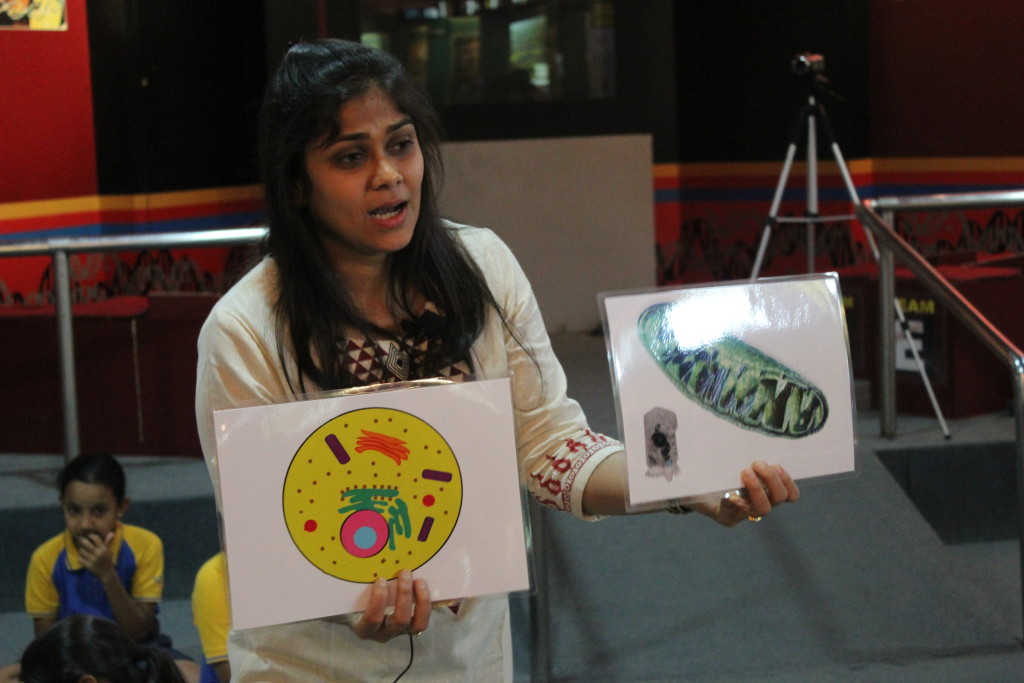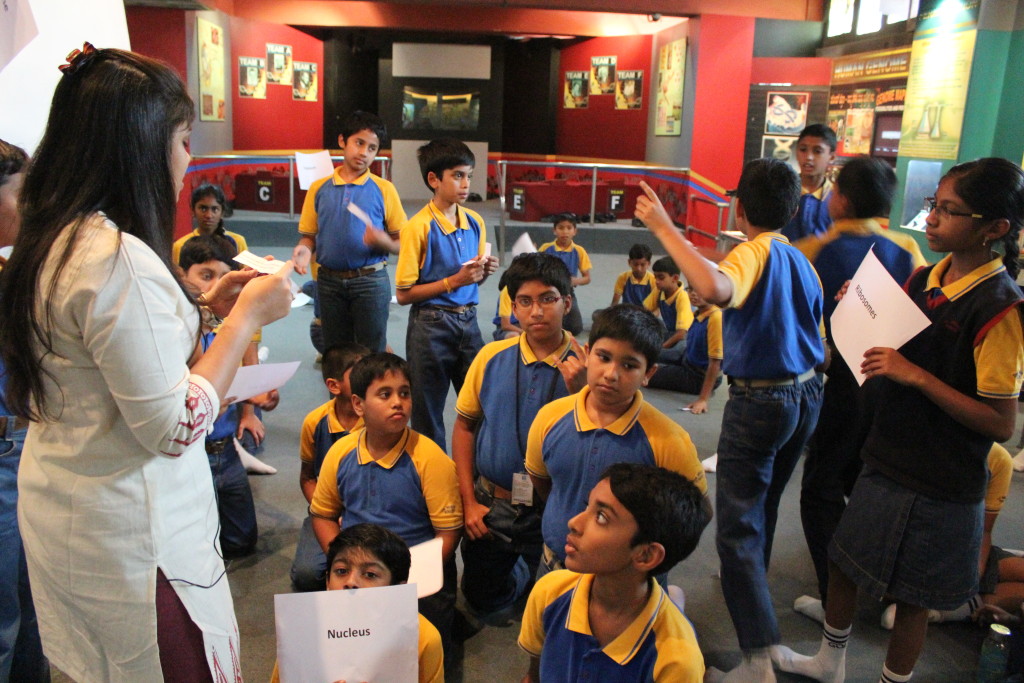Space, approach, purpose, methodology, and technique form the foundation of devising effective, experiential and fun learning outcomes for children, writes Tejshvi Jain.
Photos on this blog post courtesy: Arun Ramachandra
While many of us think designing activities for children is straightforward, the fact is there are many layers which need to be taken into consideration to get the desired impact. Designing learning experiences in classrooms differ from those in a museum space. While space itself is a major influencing factor there are other factors which contribute to the overall learning experience.
There are many aspects, theories and policies that direct the design of programs in schools and museums. This in turn dictates the approach, methodology and techniques used in both these spaces. Let’s delve into these concepts.
The approach, general philosophy of how learners absorb and thus how facilitators should enable learning, differs greatly. Many schools base their approach on concepts like Behaviorism, Cognitivism, Social Learning Theory, Social Constructivism, Multiple Intelligences or Brain-Based Learning.
The most popular among museum educators in the UK and U.S. is Kolb’s Theory of Experiential Learning. Developed in collaboration with Ron Fry, Kolb states that there are four types of learning styles or learners – experiential, imaginative, analytical, and common sense. Effective learning uses all four modes in whatever combinations the situation requires.
The purpose for visiting these spaces is different. The purpose for visiting a museum is to fulfill certain needs or objectives (I have spoken about this in my previous article) while the primary need to attend school is to gain knowledge. Hence, the learning objectives in both these spaces vary in order to address the different needs.
Based on the objectives and approach, the methodology is decided. Method is a list of procedures of precisely how to do something, often referred to as syllabus. Unlike school curriculum (ISCE, CBSE or the state board in India), which has a framework and set syllabus, learning in museums is informal, self-directed and open-ended. Through the methods followed in schools the learner is expected to master certain concepts and information related to them. Informal learning in museums focuses on the choices an individual makes and decide what, when and how they want to learn. Knowledge is actively constructed within a social and cultural framework where there is not one truth but something waiting to be discovered.
Technique is a class activity or task like research, data collection, classification, listening or observing to list only a few. There is certain common ground here which leads to the notion that designing programs/experience in museums is very similar to designing lesson plans for classroom. The differences are, while in a classroom it is often the teacher who facilitates learning, museums have the freedom of including more than one facilitator. These could be museum staff from other departments, creative professionals and experts from the fields. With plenty of hands-on activities, the entire experience is much richer.
Last week we launched our pilot program at the Visvesvaraya Industrial and Technological Museum in Bangalore. The learning module, which called for teaching about human cells (Biology), focused on making the session interactive for students from Grades 5 and 6. While designing the experience, along with Kolb’s Theory of Experiential Learning, we looked into theories of multiple intelligences and the three commonly accepted styles of learning (visual, auditory and kinetics).
This approach dictated our workshop delivery technique. It involved games, presentation, activities, a creative output, and the all favorite ‘treasure hunt’! The response was overwhelming. The children had a great time and teachers couldn’t thank us enough for making their work easier. While a lot of focus is given to formal education, informal learning in spaces like museums, libraries, parks and zoos, and other cultural and public spaces is often neglected in India. With a majority of Indian museums not having a dedicated person or team for educational and outreach activities, students lose out on this rich experience.
If you are a parent reading this blog, how would you like the schools to address the learning outcomes for your children?
About the Author
 Tejshvi Jain is the founding director of Rereeti and worked at the National Gallery of Modern Art, Bangalore prior to setting up this non-profit organization.
Tejshvi Jain is the founding director of Rereeti and worked at the National Gallery of Modern Art, Bangalore prior to setting up this non-profit organization.










Great work by Rereeti and my hearty congratulations to Tejasvi for this great art work.
A very nice exposure and learning for the school kids. Wish we had something like this in our Mumbai museum too.
Thanks Reshma. Infact BDL and CMSVS both museums have interesting outreach programmes as well. Should check it out